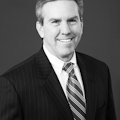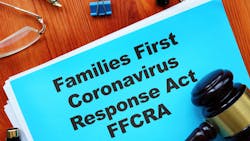How the new emergency paid sick leave law affects your practice
On March 18, President Trump signed HR 6201, The Families First Coronavirus Response Act, into law.1 The most important provisions in this act relate to emergency paid sick leave, potentially providing dental staff members paid leave if they must take time off from work due to the coronavirus.
The new law provides qualified staff members (those employed for at least 30 days) with two weeks of paid sick leave if they are ill, quarantined, show symptoms and seek diagnosis or preventive care for the coronavirus, or if they are caring for family members who are sick with the virus. Note that the law does not grant additional sick leave simply because the practice is closed due to the pandemic. It does provide up to 12 weeks of paid family leave for those caring for children whose schools or daycare centers have closed because of the coronavirus.
Sick leave amount
Employees who are sick with the coronavirus, are quarantined/isolated, or are seeking care for themselves will earn the full amount of their regular pay up to a maximum of $510 a day for two weeks or $5,110 total. Staff members caring for a sick family member or children whose schools or daycare centers are closed due to the coronavirus will receive two-thirds of their usual pay up to a daily limit of $200.
However, the Department of Labor has the authority to exempt small businesses with fewer than 50 employees from the requirement to offer paid leave to care for children under 18 whose schools are closed or whose childcare providers are unavailable if this would jeopardize the viability of the business going forward.
The American Dental Association is lobbying hard for an exemption for dental practices. On March 16, the ADA recommended that practices defer all elective procedures and provide only emergency care to help limit the spread of the coronavirus. Thus, production for complying practices (excluding endodontics and oral surgery) likely dropped by 90% or more from typical levels. As a result, we expect complying dental practices to be ruled exempt from the required payment for the 12 weeks of family leave, which could cost up to $9,600 per staffer.
Reimbursing the cost
In order to offset the cost to the practice, the new law provides that the full amount of sick leave pay granted will be reimbursed within three months in the form of a payroll tax credit to the practice. This reimbursement will also include any practice contribution for staff health insurance premiums paid during the leave, and it is fully refundable. These paid leave provisions are not permanent but rather a temporary response to the coronavirus, and they expire on December 31, 2020.
Reference
1. H.R. 6201—Families First Coronavirus Response Act. Passed March 18, 2020. Congress.gov. https://www.congress.gov/bill/116th-congress/house-bill/6201?ec=EP8SUJ
JOHN K. McGILL, JD, MBA, CPA, provides tax and business planning for dentists and specialists. The McGill Advisory newsletter is published through John K. McGill & Company Inc., an affiliate of the McGill & Hill Group LLC. It is your one-stop resource for tax and business planning, practice transitions, legal, retirement plan administration, CPA, and investment advisory services. Visit mcgillhillgroup.com or call (877) 306-9780.
About the Author

John K. McGill, JD, MBA, CPA
JOHN K. McGILL, JD, MBA, CPA, provides tax and business planning for dentists and specialists. The McGill Advisory newsletter is published through John K. McGill & Company Inc., an affiliate of the McGill & Hill Group LLC. It is your one-stop resource for tax and business planning, practice transitions, legal, retirement plan administration, CPA, and investment advisory services. Visit mcgillhillgroup.com or call (877) 306-9780.
